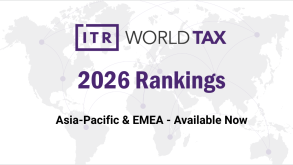Background: China's new transfer pricing (TP) framework
Legislative framework
China's TP framework had, until 2016, remained largely unchanged since 2009. In 2009, the Implementation Measures of Special Tax Adjustments – Guoshuifa No. 2 (Circular 2) had consolidated special tax adjustment rules covering the gamut of TP and anti-avoidance rules: related-party filing, contemporaneous documentation, primary adjustments, audit activity, TP methods, advance pricing and cost sharing agreements, the controlled foreign corporation (CFC) regime, thin capitalisation, general anti-avoidance rules, corresponding adjustments and competent authority matters.
In the wake of the G20/OECD BEPS project, the SAT moved rapidly to overhaul the transfer pricing legislation. The first initiative was the public consultation draft of a circular on implementation measures for special tax adjustments (discussion draft) intended to replace Circular 2, issued in September, 2015. The discussion draft, however, was short-lived. Perceived as excessively aggressive and potentially detrimental to foreign investment, it was not finalised in its original form. Instead, the SAT adopted a piecemeal approach, issuing topical legislation on selected TP areas.
The first pillar of the TP revamp was the Announcement on the Enhancement of the Reporting of Related Party Transactions and Administration of Contemporaneous Documentation (Announcement 42), issued in July 2016. Announcement 42 laid down stringent requirements for TP documentation compliance, including the three-tiered documentation approach advocated by the new post-BEPS version of the OECD Transfer Pricing Guidelines for Multinational Enterprises and Tax Administrations (OECD TP Guidelines), and set out a multitude of new TP disclosure forms.
Subsequently, the SAT released the Announcement on the Enhancement of Administration of Advance Pricing Arrangements (Announcement 64) in October 2016. With a view to reducing the advance pricing agreement (APA) logjam, Announcement 64 introduced a revised, front-loaded procedure (with examination and evaluation processes being conducted before the formal application) and included a priority list for acceptance of applications and an information exchange clause, in line with BEPS Action 5.
Announcements 42 and 64 were covered in detail by the TP chapter of the 2016 China Looking Ahead, China transfer pricing – first mover on BEPS.
The last chapter of the TP overhaul was the Announcement on Special Tax Investigations, Adjustments and Mutual Agreement Procedures (Announcement 6), released in March, 2017. Announcement 6 completed the BEPS-inspired TP framework that is expected to steer administration, policy and controversy for the years to come.
Announcement 6 on Special Tax Adjustments, Investigations and Mutual Agreement Procedures (MAPs)
Announcement 6 has a distinct anti-avoidance flavour. It is the third and most comprehensive in the series of announcements that make up China's post-BEPS TP framework. It regulates the tax audit process, special tax adjustments, self-adjustments and outbound payments from China, and writes into formal legislation some of the existing administrative practices adopted in Chinese TP audits. In addition, it replaces the guidance on many of the substantive issues related to TP: TP methods and comparability, TP adjustments, MAP and penalties applicable to TP adjustments.
Yet, perhaps the most far-reaching provisions within Announcement 6 refer to intragroup services, intangibles and substance at the level of overseas affiliates. Regarding intangibles, Announcement 6 endorses the OECD's distinction between the legal and economic ownership of intangible assets and emphasises that benefits derived from intangible assets are to be allocated based on economic substance. Building on the OECD's development, enhancement, maintenance, protection and exploitation (DEMPE) concept, which signals the functions that are relevant for the attribution of economic ownership and entitlement to intangible related returns, Announcement 6 puts forward the concept of DEMPEP – the additional 'P' standing for 'promotion'. This highlights the SAT focus on the role of intangibles throughout the value-chain and the importance of local marketing activities in the value creation process. Also, importantly, Announcement 6 indicates that royalty rates should be adjusted when the value of the intellectual property (IP), or functions, assets and risks, have changed over time, or when DEMPEP functions are not properly reflected in the remuneration.
With respect to intragroup services, Announcement 6's bedrock principle is that outbound payments for non-beneficial or 'low-substance' activities will be subject to more rigorous scrutiny and may be disallowed under certain circumstances. Non-beneficial services include shareholder activities, duplicative services, those delivering incidental benefits and, broadly, irrelevant services. As expected, and consistent with the Chinese tax authorities' position that intra-group service transactions are high-risk transactions, Announcement 6 left out the safe-harbour provision for 'low value-adding' services advocated by the OECD. It is also worth noting that Announcement 6's definition and interpretation of 'shareholder activities' is arguably wider than the definition under the OECD guidance, which may give rise to further difficulties for MNEs looking to implement consistent service charge models across the world.
As it can be seen, China has adopted the BEPS project's recommendations with a local flavour, and the country is not alone in this respect. Although the intention of the BEPS project was to bring consensus to international taxation, the application of BEPS recommendations does differ from country to country. Additionally, a number of countries have introduced domestic anti-avoidance legislation that operates outside treaties. We are expecting more disputes going forward and having effective dispute resolution mechanisms is therefore paramount. The OECD has recommended a two-year limit for resolving MAP cases. Announcement 6, however, does not provide any indication on the time that the SAT would take to resolve MAP cases. Nonetheless, it is expected that the outcomes from BEPS Action 14 and peer review pressure will increase the MAP effectiveness and reduce the inventory of unresolved cases after the two-year period.
New weaponry in the age of transparency: big data, desktop analytics and trends in TP administration
Country-by-country reporting (CbCR) is a ground-breaking outcome from the BEPS project. In the interests of greater transparency, the TP documentation standard set forth in the new version of the OECD TP Guidelines requires large MNEs to profile their deployment of resources, and allocation of revenues, profits, and tax payments, across the world. This report must typically be filed in the jurisdiction where the ultimate parent company of the group has tax residency.
With Announcement 42, China has introduced the obligation to prepare CbCR. Accordingly, an MNE with its ultimate parent company in China and consolidated revenues in excess of CNY 5.5 billion ($828 million) in 2016 had to file the CbCR for the first time by May 31 2017. The short timeframe proved to be a concern for many Chinese MNEs and, in the absence of comprehensive guidance from the OECD or the SAT, a number of implementation issues emerged, of both practical and interpretative nature. Those ranged from, for example, disparities between centrally consolidated revenues and audited subsidiary financial data, to revenue recognition practices for joint ventures, to more practical issues such as mismatches between filing deadlines for taxes and accounting periods, and even the availability and stability of the IT platform developed for the electronic filing of CbCR.
China has taken preemptive steps in relation to tax-related data collection and analysis. Even in advance of CbCR exchanges, China has already attained a head-start in taxpayer monitoring through the use of desktop analytics to select audit targets and candidates for scrutiny. This administrative approach basically relies on three sources of information: (i) TP disclosure forms (Chinese taxpayers may need to submit as many as 22 disclosure forms on an annual basis); (ii) TP documentation; and (iii) industry-wide or sector-specific financial data.
Based on the relevant sources, the SAT is equipped to extrapolate and combine industry statistical data with taxpayer-specific screening for red-flag indicators of risk or pattern deviations. This risk-monitoring resource has been referred to as the China Tax Administration Information System (CTAIS).
In accordance with Announcement 6, the SAT will focus on nine target situations that will warrant greater scrutiny (audit targets):
Enterprises with a significant number of related-party transactions or relatively more types of related-party transactions;
Enterprises with continuous losses, low profitability or fluctuating profitability;
Enterprises with profit levels lower than those of other enterprises in the same industry;
Enterprises whose profit levels do not match their functional and risk profiles or whose shared benefits do not match their allocated costs;
Enterprises that engage in transactions with related parties in low tax countries (jurisdictions);
Enterprises that fail to file their related-party transaction reporting forms or to prepare contemporaneous documentation;
Enterprises whose related-party debt-to-equity ratio exceeds the standard ratio;
Enterprises controlled by Chinese tax resident companies, or by Chinese tax resident companies together with Chinese nationals, which are established in a country (jurisdiction) where the effective tax rate is lower than 12.5%, and have failed to distribute profits or reduced distributable profits other than for reasonable operating needs; and
Enterprises that engage in tax planning schemes or tax arrangements that lack reasonable business purposes.
A few conclusions can be drawn from the target list.
First, profitability will be a yardstick to assess compliance with the arm's-length principle. As in the pre-Announcement 6 guidance, Chinese entities are expected to report consistent profits (especially limited-risk or single-function entities), in line with industry standards and their own functional profile. Announcement 6 clearly states that single-function enterprises, such as contract-manufacturers, should not report losses. Yet, companies reporting a sales revenue increase without a corresponding effect on profits are likely to be on the radar screen. This should sound especially alarming for companies that report a cost-based remuneration while undertaking material sales functions.
Second and foremost, there is abundant interest from the SAT regarding what happens on the other side of the transaction, i.e. outside China. The SAT has grown wary of TP models that readily assume that the Chinese operations are simpler vis-à-vis those of the foreign counterparties and should thus only generate a routine, 'benchmarkable' return.
Beyond TP audit requests and the use of information exchange mechanisms, the SAT has access to a wealth of information on Chinese entities' foreign counterparties. For example, both the annually-filed related party form G112000 (due for the first time by May 31 2017) and the local file (due to be finalised one month thereafter) require Chinese taxpayers to disclose their foreign affiliates' effective tax rates (and not merely the headline rate), and senior management structure and activities. Adding to that, the new local file standard requires a value-chain analysis (VCA) with a significant level of detail on the value created by the various participants along the supply chain, including the foreign entities' financial statements.
While Circular 2 specifically targeted transactions with 'tax havens', Announcement 6 alludes broadly to 'low tax jurisdictions'. The reference was clearly expanded to target transactions with countries that, despite their relatively high headline rates, are known to grant taxpayers low concessionary rates through advance rulings or otherwise, in exchange for investment commitments.
China's new TP framework has already had a measurable impact on the business environment. The next section sheds some light on the hot issues and trends in TP enforcement throughout the past year.
Moving the needle: growing complexity of TP enforcement
Leveraging its new technology resources and the critical mass of information now available, the SAT has been boldly stepping up TP enforcement by selectively focusing on specific issues and industries (i.e. 'campaign approach') or more material cases. This new audit strategy can be illustrated by the following fact: according to SAT statistics, while the number of TP assessments grew modestly in recent years, from 208 in 2011 to 254 in 2016, the average amount of adjustments grew by more than 300% in the same period, i.e. from CNY 11.8 million per each settled case in 2011 to just over CNY 37 million in 2016.
Through the last year, the audit focus on service fees and royalty payments to low-tax jurisdictions and/or low-substance entities, which began in 2014, has ramped up and represented the most noticeable TP enforcement trend in the past year. Royalty fee structures not commensurate with benefits were also under fire. As widely publicised, two of the largest assessments ever issued by the SAT were made in the past year and involved Chinese entities held through low-tax Singaporean principals.
Profitability
The large mass of information routinely collected through compliance obligations is helping the SAT to continue building a data warehouse of comparable companies. This will help the tax authorities to spot sharp deviations from profit standards and obvious outliers as preferred candidates for scrutiny.
In an investigation concluded by the Ningbo Tax Bureau in October 2015, tax officials reportedly argued that in spite of a significant growth in sales, a Chinese joint-venture in the consumer electronics industry had consistently reported low profits, while 99.72% of sales were made to a related party. Tax officials asserted that the company's 1.72% operating profit margin was significantly lower than the average 5.89% reported among the electronic components manufacturers in Ningbo, and issued an assessment of approximately CNY 50 million, including interest.
It is worth mentioning that Announcement 6 reserves the tax authorities' right to rely on secret comparables data, such as the taxpayer's peer group financial performance, although public data should be prioritised when possible. In two subsequent audit investigations involving a single taxpayer, a manufacturing enterprise, the Beijing Second Tax Bureau reportedly relied on publicly available data and conducted interviews with manufacturing entities in the same industry to assess the adequate level of profits enjoyed by peers operating in similar circumstances. The two investigations lasted for more than six years and resulted in a tax claim of over CNY 800 million.
Service fees
Payments for intra-group services to low-tax jurisdictions and/or low-substance entities are definitely in the crosshairs of the Chinese tax authorities.
In a recent assessment issued by the Shenzhen Tax Bureau in 2017 and reported by China Tax News in June 2017, a large amount in consulting fees paid by a Chinese entity for financial advisory services related to an investment in China was disallowed. The payment was treated as non-deductible in light of the fact that the low-substance, low-tax overseas service provider was considered not to have adequate means and assets to render services of that particular nature, and the Chinese taxpayer already had an experienced in-house project investment team capable of carrying out the same work.
In an earlier audit case from 2015, the Xiamen Tax Bureau reportedly concluded that a disproportionate amount of global service fees had been charged by a parent company in a low-tax jurisdiction to two Chinese entities. The fees were based on a particular allocation key (i.e. sales), while different allocation keys had been used for affiliates in other jurisdictions. Furthermore, given that the Chinese entities were not entitled to ownership of any resulting intangible assets, certain payments for IT services were re-characterised as royalty payments, subject to applicable withholding taxes. An additional assessment in excess of CNY 30 million was ultimately issued.
A different type of challenge arose in an audit by the Zhejiang Tax Bureau: it was reported that from 2004 to 2014, the taxpayer had paid technical services fees totalling CNY 57.99 million to its parent company, calculated as 4% of sales revenue, in addition to trademark royalties paid between 2011 and 2014. In addition to challenging the beneficial nature of the services, the tax bureau also challenged the reasonableness of a service fee expressed as a percentage of sales. Ultimately, the taxpayer made a supplementary payment for the corporate income tax and relevant interest.
Royalty payments
The issue of royalty payments for use of intangible property also remains a conspicuous focus point in China.
The SAT has long taken the stance that if a Chinese manufacturer was charged a royalty fee based on a fixed percentage of sales in its early stage of operations, it would not be reasonable for the same royalty fee to be levied after a long period of time. The logic behind this claim is two-fold: first, the value generated by the IP in the manufacturing process tends to decrease over time. Second, through a process of trial and error, the Chinese manufacturer has enhanced the value of the IP over the years.
In an assessment issued by the Qingdao Tax Bureau in June 2016, it was reported that while the technology used by a Chinese company in the chemicals industry had become obsolete over time, the same level of royalty fee, based on a fixed percentage of sales, was being charged annually to the Chinese company by its overseas affiliate. The royalty fee was ultimately adjusted, leading to additional taxes of approximately CNY 15 million.
This case is not isolated. Moreover, it illustrates the SAT's focus on intangibles at both ends of the supply-chain. Not only will technology and process-related IP be more scrutinised in light of the value generated, but there is also a greater focus on marketing intangibles created by 'promotion' activities in China (the final 'P' in DEMPEP).
The importance of the promotion factor in China is not to be overlooked. As the country transitions from a production powerhouse to a consumption-driven and diversified economy, the SAT is expected to increasingly impose adjustments that reflect the contribution of the burgeoning Chinese consumer market to multinationals' profits.
Reassurance in times of uncertainty: growing interest in proactive controversy resolution and China's APA programme
Over the past few years, many multinationals around the globe have substantially increased their tax reserves, largely due to TP positions. A disproportionate amount in tax reserves ultimately impacts the quality of earnings, as they become harder to forecast. Companies have thus been increasingly relying on APAs as an instrument to reduce uncertainties with material transactions and positions.
Particularly in China, given the continuing changes in the TP landscape, the overwhelming mass of sensitive information available to tax authorities, and the envisioned escalation in challenges and disputes, taxpayer interest in proactive negotiations through APA procedures is expected to soar.
While the SAT is well aware of this trend and has been trying to mend the structural hurdles that have historically limited access to the APA programme, the volume of cases is still very modest, especially when compared to other large economies.
According to the China Advance Pricing Arrangement Annual Report (2015), between 2005 and 2015 the SAT concluded a total of 125 APAs, of which 76 were unilateral and 49 bilateral. Of the 49 bilateral APAs, 34 were with Asian countries (predominantly Japan and Korea), nine with European countries and six with North-American countries. In 2013, 2014 and 2015, the Chinese tax authorities concluded, respectively, 19 APAs (11 unilateral and eight bilateral), nine APAs (three unilateral and six bilateral) and 12 APAs (six unilateral and six bilateral). Although the vast majority of APAs still involve manufacturing operations, there is an identifiable trend of further diversification as the Chinese economy undergoes structural changes.
The main reason for the modest inventory of completed cases and the significant logjam is the SAT's scarcity of resources, aggravated by China's commitment of senior personnel to BEPS meetings in the period of 2013 to 2015. During the last year, the SAT continued to invest in capacity building. Consistent with the BEPS Action 14 proposition on improving dispute resolution effectiveness and with the increase in TP audits and competent authority procedures post-BEPS, the SAT hired 16 new resources in 2016 and 26 more are expected in the coming years. This will result in a dedicated team of approximately 50 resources at the SAT headquarters and approximately 500 inspectors involved in anti-avoidance across the country. In July 2016, the SAT set up a new division (Unit 3), which will also support Units 1 and 2, primarily on APA, MAP and national joint-audits (there is a notable overlap with the 1,000 enterprises initiative launched by the SAT).
What lies ahead: paving the way to operating effectiveness and value chain equilibrium
Transfer pricing planning and optimisation opportunities are still abundant, although multinationals will have to grapple with substance issues at the level of the principal, shared-service centres (SSC), IP holding or central finance jurisdictions.
BEPS and the ensuing changes in global taxation are triggering important changes within multinationals' tax departments: tax is being elevated from a support function to a strategic business partner. In order to deliver financial performance and shareholder value in a post-BEPS environment, enterprises will need to align operating models, tax structures and business goals. As a result, tax departments will need to think proactively and strategically, and operate hand in hand with the business, extending their influence beyond compliance. The days of simply 'finding the pains' seem to be numbered.
The reality in China is no different. Increased transparency will push multinationals to seek greater equilibrium between TP models and value generation – the new TP framework (especially Announcement 6) has affirmed this position. In addition to the five commonly accepted TP methods specifically discussed in the OECD guidelines, Announcement 6 has formally written into regulation that other methods, which adhere to the principle that profits are taxed where economic activity takes place and value is created, are acceptable transfer pricing methods, alongside valuation methods. The Chinese tax authorities have publicly cited difficulties in applying the arm's-length principle in practice and their willingness to consider other methods that adhere to the principle that profits are taxed where value is created. Whilst the controversial value chain apportionment method set out in the 2015 special tax adjustments discussion draft did not make its way into Announcement 6, Announcement 6 does leave room for the Chinese tax authorities to consider what some may consider to be non-conventional TP methods.
Going forward, enterprises operating in and out of China should revisit their operating and TP models and develop a risk management approach that addresses (i) mismatches between management accounts, tax accounts and group consolidated financial statements, (ii) TP models that allocate high profits to overseas affiliates with limited economic substance, particularly when the actual value-creation activities are wholly or partly performed in China, and (iii) significant outbound payments such as service charges, royalty or interest payments.
Cheng Chi |
|
|---|---|

|
Partner, Tax KPMG China 8th Floor, KPMG Tower Oriental Plaza, No. 1 East Chang An Ave., Beijing Tel:+86 (10) 8508 7608 Cheng Chi is the partner-in-charge of KPMG's global transfer pricing services for China and Hong Kong. Before returning to China in 2004, Cheng started his transfer pricing career in Europe with another leading accounting firm based in Amsterdam. He has led many transfer pricing and tax efficient supply chain projects in Asia and Europe, involving advance pricing arrangement negotiations, cost contribution arrangements, Pan-Asia documentation, controversy resolution, global procurement structuring, and headquarters services recharges for clients in the industrial market, including automobile, chemical, and machinery industries, as well as the consumer market, logistic, communications, electronics and financial services industries. In addition to lecturing at many national and local training events organised by the Chinese tax authorities, Cheng has provided technical advice on a number of recent transfer pricing legislative initiatives in China. He has been recommended as a leading transfer pricing adviser in China by the Euromoney Legal Media Group since 2009 and as a tax controversy leader by International Tax Review. |
Xiaoyue Wang |
|
|---|---|

|
Partner, Tax KPMG China 8th Floor, Prince's Building 10 Chater Road Central, Hong Kong Tel: +852 2522 6022 Xiaoyue Wang joined KPMG China recently, with a base in Hong Kong. As a special adviser on transfer pricing, she supports clients on critical and strategic transfer pricing issues. Prior to joining KPMG, she had a distinguished career in international tax administration with the State Administration of Taxation (SAT), rising through the ranks to deputy director general of the international tax division. In various capacities, she represented China in international negotiations and inter-governmental cooperation on tax administration matters, led the drafting and promulgation of all major transfer pricing and anti-avoidance legislations to date, and developed a highly effective national structure for transfer pricing and anti-avoidance administration within the SAT. Xiaoyue has a PhD in economics from the Renmin University of China and an LLM in taxation from Golden Gate University in the US. |
Kelly Liao |
|
|---|---|

|
Partner, Tax KPMG China 21 Floor, CTF Finance Center 6 Zhujiang East Road, Zhujiang New Town Guangzhou 510620, China Tel (Shenzhen): +86 (755) 2547 1069 Tel (Guangzhou): +86 (20) 3813 8668kelly.liao@kpmg.com Kelly Liao is a partner in KPMG China, based in Southern China. She started her professional career in 1999 and has extensive working experience in China, Hong Kong and Finland. Kelly became specialised in transfer pricing in 2004. She has been actively assisting multinational enterprises in transfer pricing dispute resolution, value chain planning, rationalising transfer pricing policies, formulating cost recharging policies, applying for advance pricing arrangements and preparing transfer pricing documentation in China. Kelly's clients include a number of multinational enterprises in a wide range of industries, including infrastructure, chemical/oil and gas, consumer goods, retail, electric and electronics, property development, pharmaceuticals, machinery, finance and e-commerce. She is a Chinese Certified Public Accountant, Chinese Certified Tax Agent, Hong Kong Certified Tax Agent and is a member of the Association of Chartered Certified Accountants. |
Mimi Wang |
|
|---|---|

|
Partner, Tax KPMG China 26th Floor, Plaza 66 Tower II 1266 Nanjing West Road Shanghai 200040, China Tel: +86 21 2212 3250 Mimi Wang is a partner with KPMG's global transfer pricing services based in Shanghai, serving clients in a wide range of industries. Mimi started her transfer pricing career in London in 2005 and relocated to China in 2012. Mimi has managed many multi-jurisdictional planning studies, documentation and has participated in the negotiation of unilateral and bilateral advance pricing agreements and audit assessments. She has experience in a wide range of transfer pricing issues, including tangibles, intangibles, intra-group services, intra-group financing, business restructurings, etc. Mimi also has significant experience in business and intellectual property (IP) valuations. As a member of KPMG China's BEPS Centre of Excellence, Mimi is also responsible for analysing the implications of BEPS for clients with operations in China. She has delivered training to tax officials and participated in discussions with senior State Administration of Taxation (SAT) and Ministry of Finance (MOF) officials on topical transfer pricing issues. Mimi has a bachelor's degree from the London School of Economics and is a chartered accountant with the Institute of Chartered Accountants in England and Wales. |
Rafael Triginelli Miraglia |
|
|---|---|

|
Senior Manager, Tax KPMG China 26th Floor, Plaza 66 Tower II 1266 Nanjing West Road Shanghai 200040, China Tel: +86 21 2212 3176 Rafael Triginelli Miraglia is a senior tax manager with the global transfer pricing team of KPMG China. His practice focuses on (re)design and implementation of transfer pricing systems, business restructuring advice, value chain analysis and planning, and outbound investments across a broad range of industries, including fast moving consumer goods, software, chemicals, airspace and defence and industrial manufacturing. Rafael graduated in law (Universidade Federal de Minas Gerais, Brazil, 2004) and obtained a Master of Laws (PUC-MG, Brazil, 2008) and an LLM in advanced studies in international tax law (ITC – Leiden University, the Netherlands, 2011). He is a visiting transfer pricing lecturer at the ITC – Leiden University and has taught courses in tax and constitutional law at PUC/MG and customs law at UNA/MG. Rafael has been a member of the Brazilian Bar Association (Ordem dos Advogados do Brasil) since 2005. Before joining KPMG China, Rafael worked between 2011 and 2015 as a tax associate with a global law firm in the Netherlands and, before that, as head of tax with a Brazilian law firm. |









